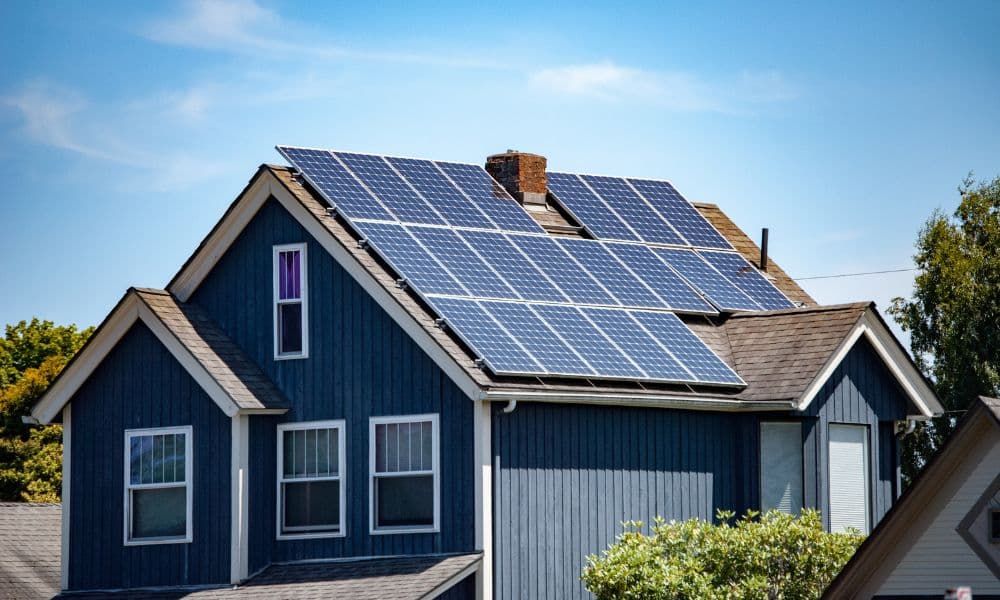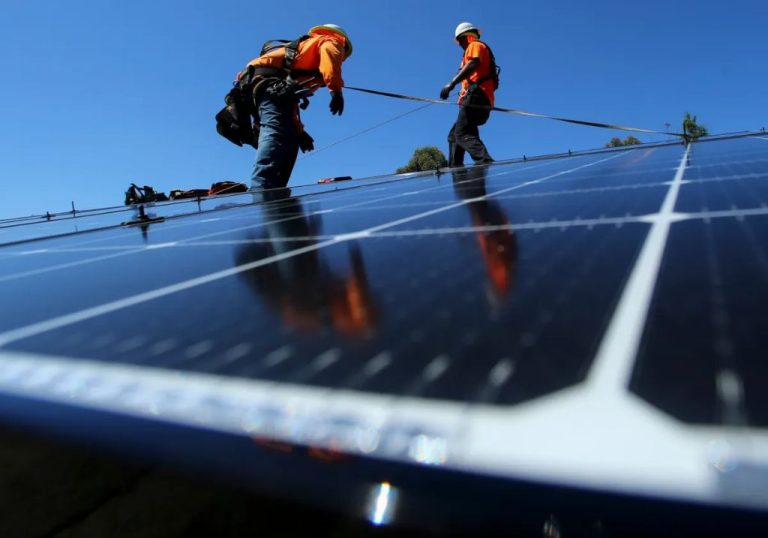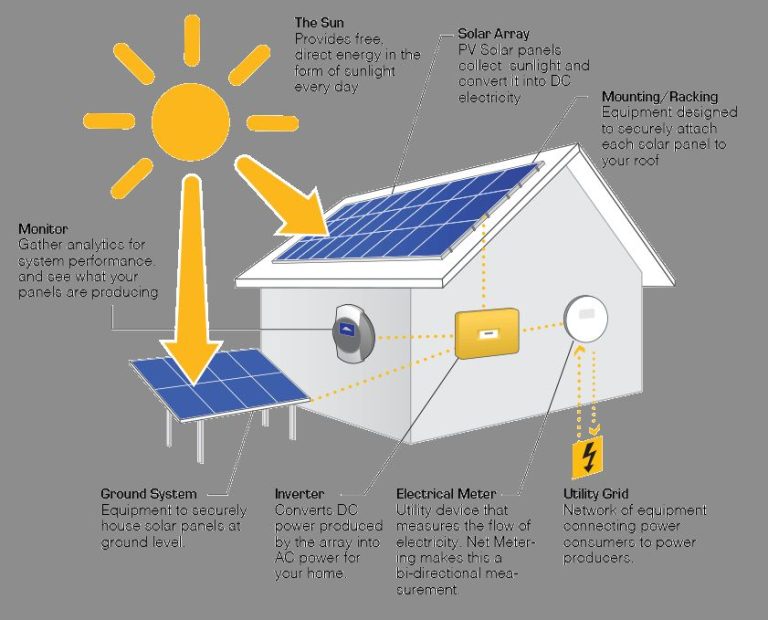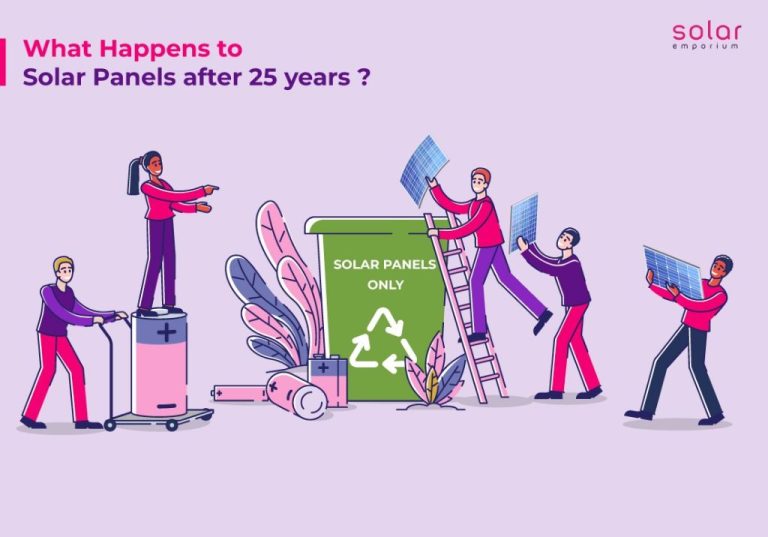Can Solar Energy Power A Building?
Solar energy is the radiant light and heat from the sun that is harnessed using a range of technologies such as solar heating, photovoltaics, and others. Solar energy technologies convert sunlight into electric current or heat for buildings. The conversion works when semiconducting materials absorb photons from sunlight, and free electrons are knocked loose, causing electricity to flow. This is called the photovoltaic effect. This electricity can then be captured and converted into usable power that can provide electricity for homes, businesses, and the grid. Solar energy is considered a renewable energy source because the sun’s radiation will continue shining indefinitely. Capturing solar energy does not produce air pollution, toxic waste, or greenhouse gases, so it is an environmentally friendly energy source [1].
Benefits of Solar Energy
Solar energy is a clean and renewable source of power that can help reduce reliance on fossil fuels. According to the U.S. Department of Energy, solar electricity provides an opportunity to reduce monthly utility bills and make a long-term, low-risk investment (https://www.energy.gov/energysaver/benefits-residential-solar-electricity). Unlike coal, oil, and natural gas, solar energy production does not lead to air or water pollution. Harnessing the sun’s energy is also sustainable – the amount of solar radiation that hits the Earth in an hour is more than what the entire human population uses in a year, making solar a virtually unlimited resource.
Challenges of Solar Energy
While solar energy has many benefits, it also comes with some unique challenges. Two of the biggest disadvantages of solar power are that it is an intermittent power source and can be expensive to store.
Solar panels only generate electricity when the sun is shining. At night and on cloudy days, solar panels do not produce any power. This intermittency means that solar energy needs to be paired with other sources like batteries or the utility grid for times when the sun is not shining (Source: https://www.greenmatch.co.uk/blog/2014/08/5-advantages-and-5-disadvantages-of-solar-energy).
Storing solar energy for use when the sun goes down is possible with batteries, but battery storage substantially increases costs. The batteries required to store enough energy for a building’s needs can be prohibitively expensive in many cases (Source: https://hbr.org/2021/06/the-dark-side-of-solar-power). This challenge makes relying fully on solar energy difficult for many buildings.
Factors That Determine Solar Potential
Several key factors determine whether a building is well-suited for solar energy:
Climate: The amount of sun a location receives has a major impact on solar potential. Areas with consistently sunny weather will produce more solar energy. Cooler climates can work but will generate less total solar power. Tracking solar irradiation maps is important for understanding a site’s solar resource.
Roof Orientation: Angling solar panels towards the equator optimizes energy production. In the northern hemisphere, south-facing roofs receive the most sunlight. East and west-facing roofs can work but produce less energy. North-facing roofs generally don’t get enough sun for solar.
Shading: Solar panels perform best with maximum sun exposure. Buildings with minimal shade from trees, structures and hills are ideal for solar arrays. Even small amounts of shading can noticeably reduce system output.
Types of Solar Systems for Buildings
There are two main types of solar energy systems used for buildings: photovoltaic panels and solar water heating. Photovoltaic panels, also known as PV panels, convert sunlight directly into electricity using semiconducting materials. Arrays of PV panels can be installed on rooftops, facades, or ground-mounted to generate electricity for a building.
Solar water heating systems use solar thermal collectors to heat water. There are two types of solar water heating systems: active, which circulate water or a heat-transfer fluid through the collectors, and passive, which rely on gravity and the tendency for water to naturally circulate as it is heated. The heated water is then stored in an insulated tank for domestic hot water needs.

Sizing a Solar System
Properly sizing a solar system for a building requires calculating the building’s energy needs and the available solar resource. The key factors are:
- The building’s average daily kilowatt-hour (kWh) electricity usage
- The building’s location and associated peak sun hours per day
- The size of the solar array in kilowatts (kW) needed to meet the building’s energy needs
To calculate the required solar array size in kW, take the building’s average daily kWh usage and divide it by the peak sun hours for the location. For example, if a building uses 30 kWh per day, and the location averages 5 peak sun hours per day, the solar array size would need to be 30 kWh / 5 hours = 6 kW.
When sizing a system, it’s important to account for future energy needs and leave room to expand. Oversizing by 10-20% helps ensure the system can meet all the building’s electricity requirements (cite: https://unboundsolar.com/blog/how-to-size-solar-system). Proper solar system sizing maximizes solar production and return on investment.
Costs of Installing Solar
Installing a solar energy system on a building comes with various upfront and ongoing costs. The main costs associated with going solar include:
Equipment Costs
The solar panels themselves make up around 30% of the total system cost on average. According to NerdWallet, the cost for solar panels ranges from $10,000 to $25,000 for an average-sized residential system [1]. The inverters, racking, and other electrical equipment will add several thousand dollars more to the upfront price.
Installation Costs
Professional installation of a solar energy system typically costs $1,000 to $2,000 per kW capacity, or about $3,000 to $8,000 for a standard residential setup [2]. The complexity of the roof and electrical work needed influences installation costs.
Maintenance Costs
Over the lifespan of a solar panel system, which is typically 25-30 years, you can expect around $1,000 to $3,000 in maintenance costs. This includes inverter replacements, panel cleanings, roof repairs, and other upkeep tasks.
Financial Incentives for Solar
There are several financial incentives available to help offset the upfront costs of installing solar panels. These include federal tax credits, state/local rebates, and net metering programs.
The federal solar tax credit allows homeowners to deduct 26% of the cost of installing a solar energy system from their federal taxes through 2034. This credit applies to both residential and commercial solar installations. For more details see the Homeowner’s Guide to the Federal Tax Credit.
Many states, counties, municipalities and utilities offer rebates or incentives for solar panel installations. These local rebates can range anywhere from $500 to $8000 based on the size of the system. Incentive amounts and eligibility rules vary widely so it’s important research what’s available for your specific location. The Solar Energy Industries Association provides an overview of state-level solar incentives.
Net metering programs allow solar panel owners to get credit on their utility bill for any excess electricity their system generates. This helps offset the cost of grid-supplied electricity at times when solar generation is low. Availability and compensation rates for net metering vary by location and utility provider.
Examples of Solar-Powered Buildings
There are many examples of famous buildings around the world that utilize solar energy successfully. According to Sullivan Solar Power, The White House in Washington D.C. has solar panels installed on the roof that provide hot water and electricity (Sullivan Solar Power). The Eiffel Tower in Paris, France also has solar panels integrated into a large wall on the first level that provide electricity. The Burj Khalifa in Dubai has solar panels covering many of the upper floors and spire that provide power for the building’s needs (Purepoint Energy).
Some other examples of successful solar powered buildings include the Sundial Building in Dezhou, China which is covered on all sides by sloped solar panels and produces more energy than it needs. The National Stadium in Kaohsiung, Taiwan has 8,844 solar panels integrated into the roof that provides 1.14 GWh of electricity per year. Even the Vatican City has solar panels installed above the Paul VI audience hall that provides energy (Purepoint Energy). These buildings showcase how solar energy can effectively power buildings with different functions and in various locations around the world.
Conclusion
Solar power is an increasingly feasible means of generating electric power for buildings of all sizes. Key points to consider are the incidence of sunlight available, the size and types of solar panels and arrays, the associated costs, and the availability of local incentives or rebates. Many examples have proven that solar energy alone can power everything from homes to skyscrapers entirely off the grid. With solar panel costs decreasing, installation efficiency and reliability improving, and solar-friendly building codes expanding, solar power is an attractive and attainable goal for organizations looking to control electricity costs and lower their carbon footprints. With proper analysis and planning, and accounting for utilities requirements, a building’s entire electric load can typically be offset, making solar power for buildings a realistic and promising clean energy solution.







